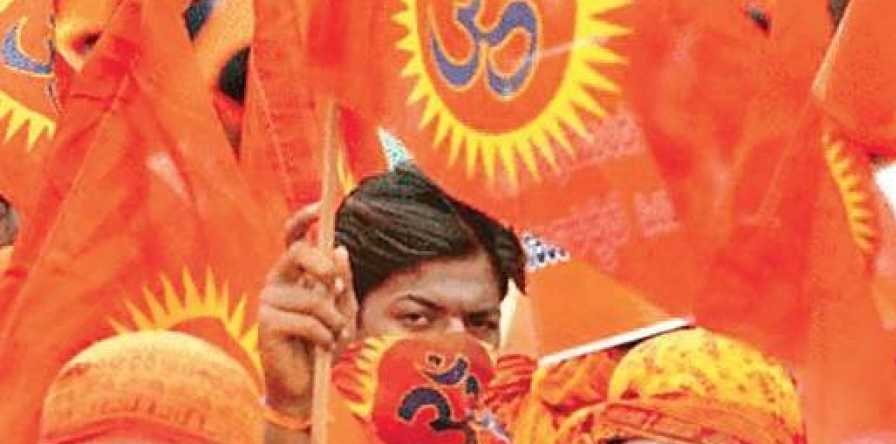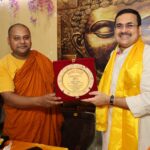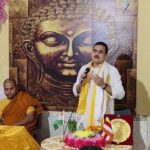A nationalist narrative
- By : Anirban Ganguly
- Category : Articles

For those who wish to embark on a deeper quest to internalise the essence of the evolution of Bharat Mata, this is one work that cannot be ignored.
Swapan Dasgupta’s magnum opus, Awakening Bharat Mata: The Political Beliefs of the Indian Right, comes across as an inspiring, fascinating, thought-provokingly rich tour d’horizon which articulates and delineates the contours of the nationalist political narrative in India.
The prefatory chapters discussing the political context of the book, the delineation of the rise of the Hindu political narrative, the logical and cogent argumentations, the wide sweep of references and parallels, the analysis and contextualisation of conservatism and its examination in the Indian cultural and political milieu make the reading of this opus an exercise that is challenging and yet enriching.
The reader is bound to emerge elevated having partaken of the flavours “of the different attitudes that have characterised interventions of the right in public life”.
With the advantage of having a close view of momentous political developments over the last three decades, having prolifically written about these, and articulated and interpreted their ramifications and unfolding, Swapan Dasgupta’s interpretation of the evolution of the political narrative of the Indian “right”—read nationalists—is both interesting and authentic.
If the author’s aim was “to narrow the apparent mismatch between the Indian right’s political clout and the disdain with which it is viewed in the citadels of intellectual power”, then he has amply succeeded in that effort. India’s right too had its share of intellectuals.
Many of these intellectual giants were deliberately “airbrushed from intellectual imagination”, this volume, through masterstrokes of thoughts, contemplation and interpretations, has revived those airbrushed intellectuals and has again placed them at the centre of our discourse, our intellectual struggle to shape a New India.
The author almost lyrically states his objective of the need for a cultural self-recovery, of a restating of the political thought-world that gave life to the nationalist narrative and then to channelise it to propel the quest for a New India.
He writes, “The themes that preoccupied conservative thinkers quietly resisting colonial encroachments are no doubt important as history. But many of these preoccupations did not die out with the onset of Independence and the recovery of national sovereignty.
“They have persisted as guiding forces in contemporary India. The idea of national resurgence is as important in a globalised 21st-century setting as it was in the India of the mid-19th century. The ideas that drove Indians of an earlier age have persisted in one form or another in shaping contemporary politics. The quest for a New India has invariably involved the rediscovery of an Old India.”
True, it is not a comprehensive documentation of the ideational world of Indian nationalist thought but it gives a wide sweep by including seminal personalities and their key texts and writings.
The selection made from Bankim Chandra, Sri Aurobindo, Ananda Coomaraswamy, Sister Nivedita, Vinayak Damodar Savarkar, to Ramananda Chatterjee, RC Majumdar, RG Bhandarkar, Sardar Patel, Sitaram Goel, NC Chatterjee, Jadunath Sarkar, VS Naipaul, Nirad Chaudhuri, Atal Bihari Vajpayee, LK Advani, Girilal Jain and S Gurumurthy, exactly does that which the author has argued. It demonstrates how the foundational ideas for national resurgence in its many dimensions persisted through the ages and continued to shape discourse to the present times.
The author could have included a text from MS Golwalkar, though he does discuss Golwalkar, focusing on his discarded text We, or Our Nationhood Defined.
The essential Golwalkar is to be found beyond that callow tract. One also misses the inclusion of Dharampal, a contemporary of Sitaram Goel and one who was among the most prolific articulators of this quest for a national resurgence. But perhaps these could be included in a sequel that must naturally follow such a volume.
For those who had asked where are the intellectuals of the Indian right, this is a must-read volume. For those who wish to embark on a deeper quest to internalise the essence of the evolution of the narrative of Bharat Mata, this is one work that cannot be ignored or omitted.

















